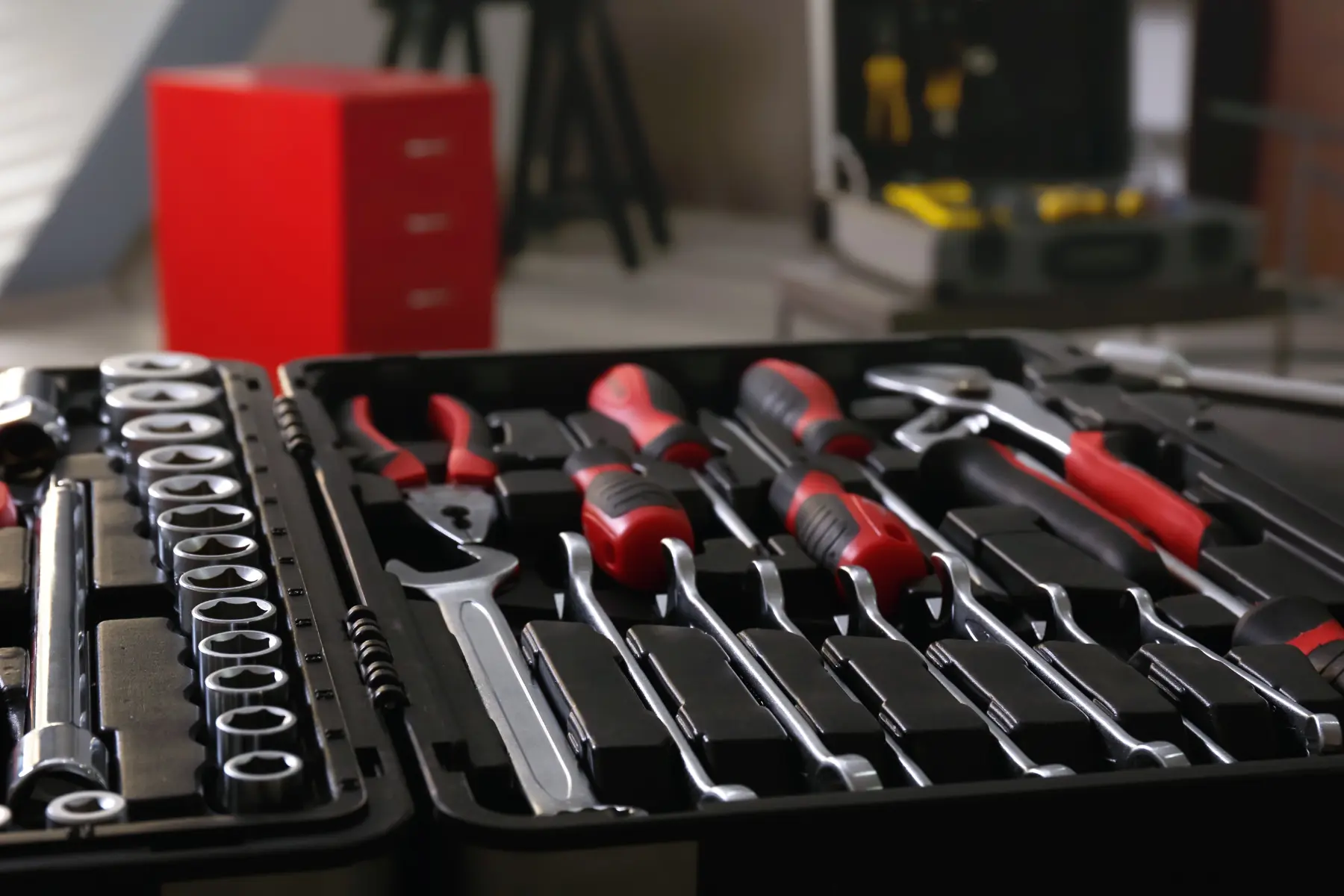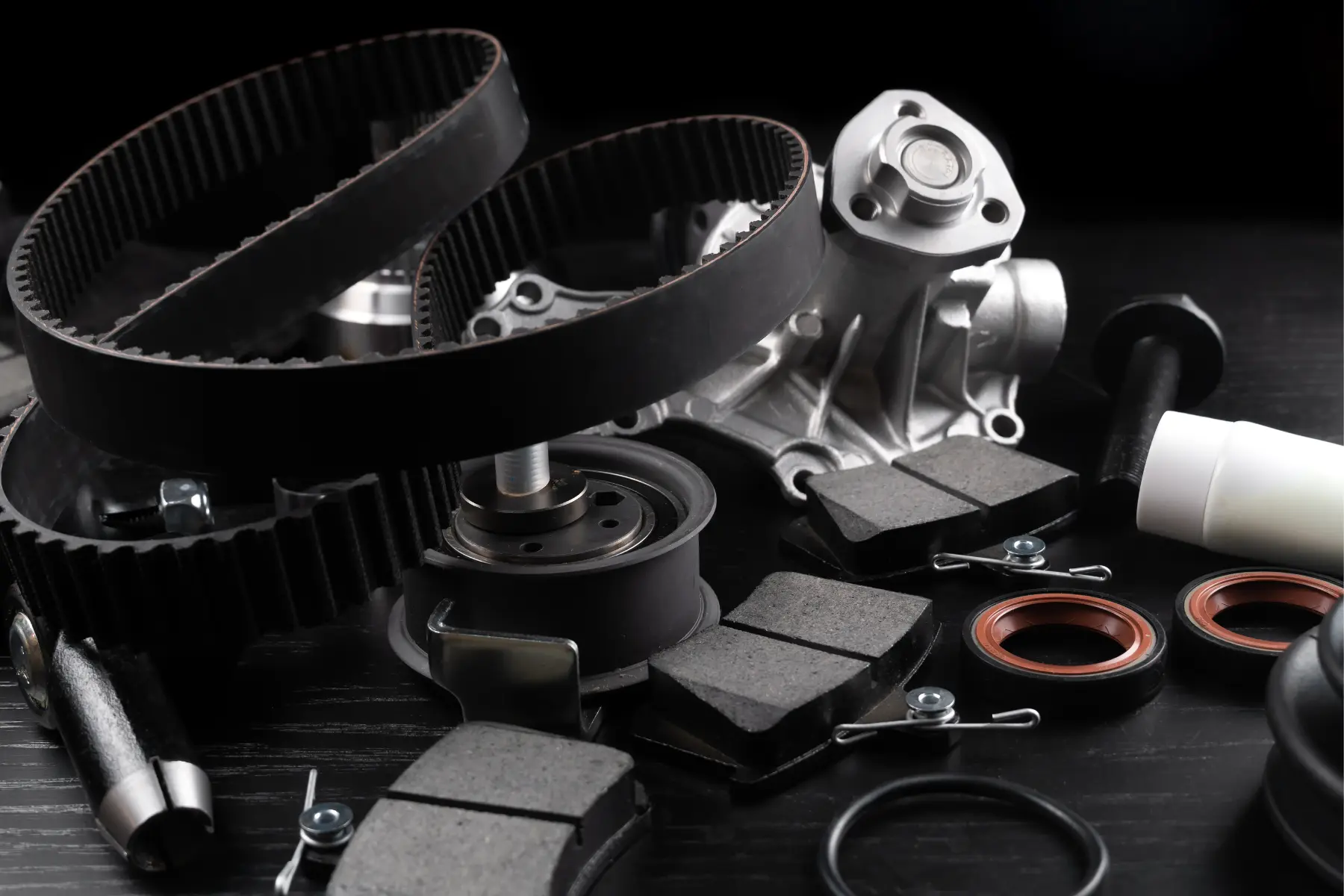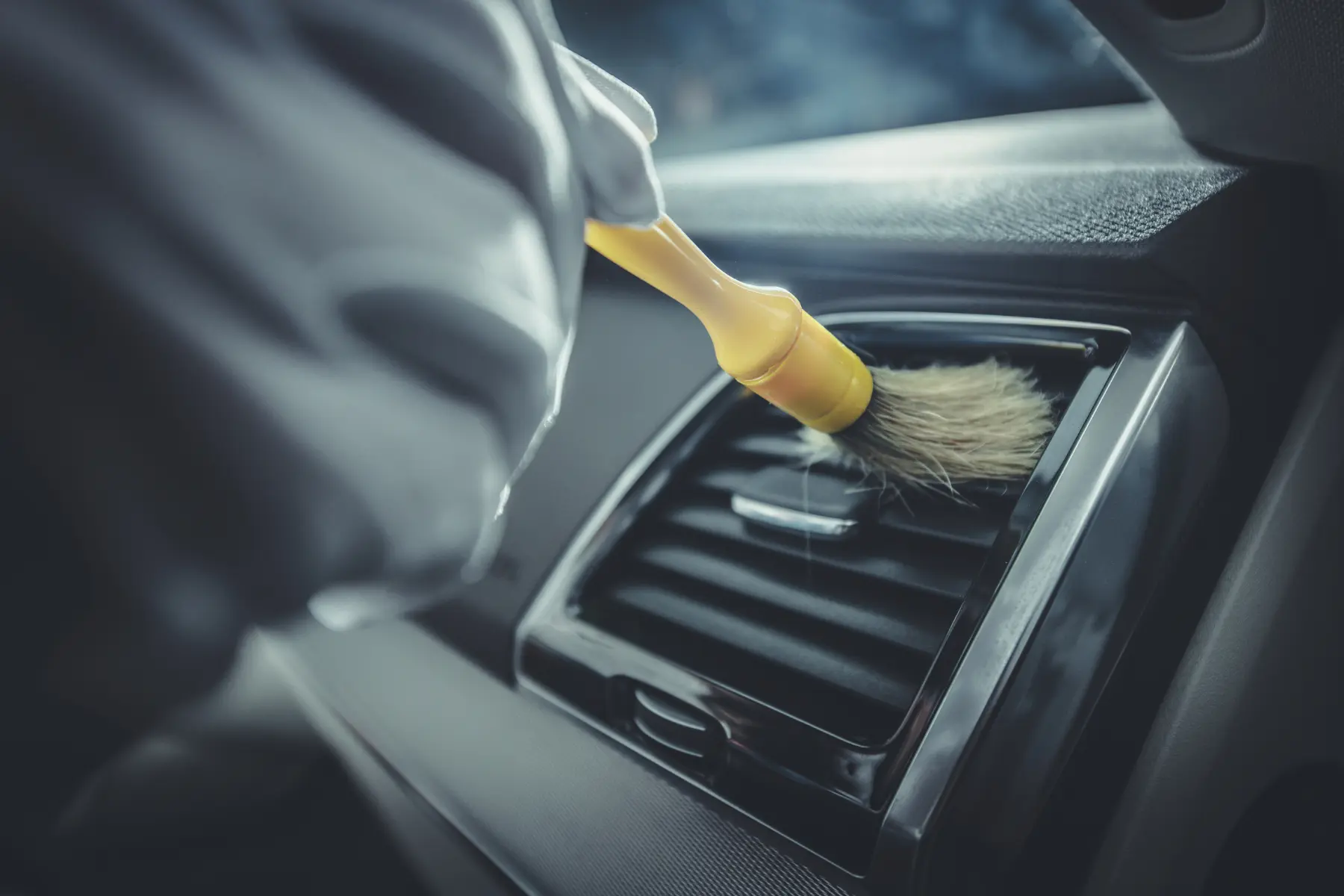In today’s world, the ability to handle your car maintenance can save you not just heaps of money but also time. Equipping your garage with the right tools for car maintenance is not just a hobby for car enthusiasts but a practical step towards self-sufficiency. The satisfaction of diagnosing a problem, executing the repair, and seeing your vehicle run smoothly because of your efforts is unparalleled. It’s about empowering yourself with the knowledge and tools to maintain and repair your vehicle, ensuring it stays in top condition, which can significantly extend its life and performance.
Basic Tools for Car Maintenance
Hand Tools
The backbone of any DIY car repair tool kit includes a reliable set of hand tools. Wrenches, screwdrivers, and pliers are indispensable for various tasks, from basic maintenance to more complex repairs. A comprehensive set should include different sizes and types, such as adjustable wrenches for various nut sizes, Phillips and flathead screwdrivers for screws of all types, and needle-nose pliers for those hard-to-reach places.
Measuring and Diagnostic Tools for Basic Maintenance
Tools such as tire pressure gauges, multimeters, and OBD-II (On-Board Diagnostics) scanners fall under this category. These tools allow you to diagnose issues accurately and ensure your vehicle is running at optimal levels. For example, a proper tire pressure gauge can help you maintain the correct tire pressure, which is essential for safe driving and fuel efficiency. A multimeter is invaluable for diagnosing electrical problems, while an OBD-II scanner provides insight into the car’s computer system, helping pinpoint engine and performance issues.
Lubrication Equipment
Proper lubrication is pivotal for the longevity and smooth operation of many car parts. Lubrication equipment such as grease guns and oil cans should have a special place in your garage. These tools ensure that you can easily apply lubricants to parts like hinges, bearings, and other moving components, reducing wear and tear and preventing rust.
Storage Solutions for Small Tools
Organizing and storing your home car repair gear efficiently can make your maintenance tasks much easier and more enjoyable. Small tools, in particular, can easily get lost or misplaced if not stored properly. Investing in toolboxes, magnetic tool holders, and wall-mounted pegboards can save you a lot of frustration. Not only do these storage solutions keep your home car repair tools organized and within reach, but they also protect them from damage, ensuring they remain in good condition for years to come.
Specialized Equipment for Home Car Repair
Automotive Jacks
Having a reliable automotive jack is crucial for any DIY car garage equipment setup. It’s the gateway to performing a range of repairs and maintenance tasks underneath your vehicle. There are several types of jacks available, including floor jacks, scissor jacks, and bottle jacks, each suited for different vehicles and uses. Safety is paramount when using any jack. Always ensure the vehicle is on a flat, stable surface, use wheel chocks to prevent rolling, and never rely on the jack alone for support—use jack stands to secure the vehicle before starting your work.
Torque Wrenches for Precise Bolt Tightening
For tasks requiring precise bolt tightening, torque wrenches are indispensable in ensuring you apply the exact amount of force needed. This precision is critical for many components of your vehicle, as over-tightening can cause damage while under-tightening can lead to parts becoming loose over time. A good quality torque wrench will have settings that allow you to apply specific torque values according to the manufacturer’s specifications, ensuring every bolt is perfectly tightened.
Specialty Tools for Engine and Transmission Work
When delving into more complex areas like the engine and transmission, specialty tools become necessary. These might include camshaft locking tools, valve spring compressors, and transmission jack adapters. Such tools are designed for specific tasks that require a precise approach, often tailored to the unique design of certain vehicle models. While not everyone will need these tools immediately, having them on hand as your skills advance opens up a new realm of DIY maintenance possibilities.
Tools for DIY Car Maintenance
Essential Electrical Tools
For diagnosing and repairing the electrical systems in your car, essential electrical tools such as multimeters and circuit testers are must-haves. These essential car repair tools at home allow you to troubleshoot issues with the battery, alternator, and other electrical components by measuring voltage, current, and resistance. Understanding how to use these tools can save you from guesswork and potentially costly mistakes, ensuring your vehicle’s electrical system functions smoothly.
Fluid Service Tools
Changing fluids is a fundamental aspect of car maintenance, and having the right fluid service tools can make these tasks cleaner and more efficient. Oil drainers, for example, are designed to catch used oil with minimal mess, while funnels ensure you can refill fluids without spills. Keeping your vehicle’s fluids at the correct levels and condition is vital for its performance and longevity, making these tools essential for every home mechanic.
Brake Service Tools
Brake maintenance is critical for safety, and having specialized car maintenance tools like bleeders and adjusters can help you perform these tasks with precision. Brake bleeders remove air from the brake lines, ensuring your brakes respond correctly when applied. Adjusters, on the other hand, help maintain the proper distance between the brake pads and rotors or drums. Regular brake maintenance not only ensures your safety but also extends the lifespan of your braking system components.
Cooling System Tools
Maintaining your vehicle’s cooling system is essential to prevent overheating and engine damage. Cooling system tools such as pressure testers and refill kits help you ensure the system is sealed properly and free from leaks. A pressure tester can identify weak points in the cooling system, while a refill kit ensures you can replace the coolant without introducing air pockets, which can lead to overheating. Proper maintenance of the cooling system keeps your engine running at the optimal temperature, enhancing performance and durability.
Home Car Repair Gear and Safety Equipment
Personal Protective Gear
For any DIY mechanic, personal safety should be a top priority. This means equipping yourself with the right protective gear before diving into any repair task. Gloves protect your hands from cuts, burns, and exposure to harmful chemicals. Goggles shield your eyes from flying debris and fluids, while ear protection is essential when using loud power tools. Each piece of gear plays a crucial role in preventing injuries, ensuring you can enjoy your hobby safely and comfortably.
Fire Safety Equipment
Fire safety equipment, including extinguishers and blankets, is vital in any basic garage equipment for cars. The nature of automotive repair, involving electricity, flammable liquids, and potentially sparks, means there’s always a risk of fire. Having a fire extinguisher designed for electrical and liquid fires within easy reach provides peace of mind. Similarly, a fire blanket can be a quick and effective way to smother flames, preventing them from spreading. It’s essential to familiarize yourself with how to use these tools properly in case an emergency arises.
First Aid Kit: A Must-Have in Any Garage
A well-stocked first aid kit is an indispensable tool in any garage, workshop, or household. Given the range of activities that occur in these environments, from minor repairs to extensive projects, the risk of injuries is ever-present. Having a comprehensive first aid kit readily available can significantly mitigate the severity of these injuries by providing immediate care. Here are the essential items every garage first aid kit should include:
- Antiseptic Wipes: Essential for cleaning wounds before dressing, antiseptic wipes help prevent infection by removing bacteria and other pathogens from the skin’s surface around cuts or abrasions.
- Assorted Bandages: A variety of bandages, including adhesive bandages in multiple sizes, should be available to cover different sizes of cuts and injuries. This ensures that any wound, no matter its size, can be adequately protected.
- Gauze Pads: For larger injuries that require more absorbent material, gauze pads are crucial. They help in covering and protecting the wound, absorbing any excess blood or exudate, and providing a clean environment to promote healing.
- Adhesive Tape: To secure bandages or gauze pads in place, adhesive tape is necessary. It provides a strong hold to ensure that the dressing stays intact and offers wound protection against external contaminants.
- Scissors and Tweezers: Scissors are needed for cutting tape, bandages, or clothing away from an injury site, while tweezers can be invaluable for removing debris such as splinters or glass from wounds.
- Disposable Gloves: Gloves play a critical role in maintaining hygiene during the treatment of injuries. They protect both the caregiver and the injured person from the transmission of infectious agents.
- Burn Cream: For treating minor burns, a soothing burn cream or gel can provide immediate relief, reduce the risk of infection, and support the healing process.
- Eye Wash Solution: To flush out irritants or foreign objects from the eyes, an eye wash solution is essential. This can help alleviate pain and prevent further injury to the eye.
- Cold Pack: A cold pack is useful for reducing swelling and numbing pain around injuries such as sprains, strains, or bruises, providing immediate relief.
- Pain Relief Medication: Over-the-counter pain relievers can offer quick relief from discomfort and are an important component of any first aid kit.
Ensuring that a first aid kit in the garage includes these essential items can make a significant difference in the immediate care provided in the event of an accident. Regularly checking and restocking the first aid kit is just as important as having it in the first place, to ensure that all items are within their expiration date and ready to use when needed. By being prepared with a well-equipped first aid kit, you can respond effectively to injuries, providing care and comfort until professional medical treatment can be obtained if necessary.
Lighting and Ventilation for a Safe Working Environment
Adequate lighting ensures you can see your work area clearly, reducing the risk of accidents and mistakes. It’s important to have a combination of overhead lighting and task lighting to illuminate specific areas when working on detailed tasks. Good ventilation is equally important, especially when working with volatile substances or performing tasks that generate fumes, such as painting or welding. Installing fans or an exhaust system helps to keep the air clean, protecting your health and creating a more comfortable working environment.
Assembling a DIY Car Repair Tool Kit
Determining Your Needs Based on Skill Level and Vehicle Type
Choosing the right tools and equipment for automotive maintenance requires a careful assessment of your needs, which vary significantly based on your skill level, the type of vehicle you own, and your maintenance or repair objectives. Whether you’re performing routine upkeep, addressing specific problems, or undertaking a major restoration project, having the right set of tools can make all the difference in the efficiency and quality of your work. Here’s a quick guide to help you determine your needs:
- Assess your Skill Level:
- Beginner: If you’re new to automotive maintenance, start with a basic set of tools that includes screwdrivers, wrenches, and a jack. Focus on learning basic maintenance tasks such as oil changes and tire rotations.
- Intermediate: With some experience, you might look into more specialized tools like torque wrenches and multimeters for electrical diagnostics, allowing you to take on more complex repairs.
- Advanced: For those with extensive experience and knowledge, investing in professional-grade tools and diagnostic equipment can be worthwhile to tackle in-depth rebuilding projects and sophisticated diagnostics.
- Consider your Vehicle Type:
- Older models often require a different set of tools compared to newer, technology-driven cars. Older vehicles may benefit from a more traditional toolkit, while newer models might require digital diagnostic tools to interact with the vehicle’s computer systems.
- Identify your Maintenance Goals:
- Basic upkeep includes routine tasks like oil changes and brake pad replacements, requiring a fundamental toolkit.
- Minor repairs might involve replacing belts or starter motors, necessitating a more comprehensive set of tools.
- In-depth rebuilding projects, such as engine overhauls, demand a wide array of specialized tools and equipment.
- Set a Budget: Quality tools are an investment in your vehicle’s longevity and your safety. Balance the need for affordability with the benefit of buying durable, reliable tools that will last. Starting with a basic set and gradually acquiring more specialized tools as needed can be a cost-effective strategy.
Organizing Your Tool Kit for Efficiency
Use toolboxes, organizers, and labels to keep everything in its place. This not only saves time during your projects but also prevents loss and damage. Consider the layout of your tools, grouping them by type or frequency of use, and utilize drawer liners to protect and keep them from shifting. An organized tool kit streamlines your workflow, making it easier to find exactly what you need, when you need it.
As you continue on this path, embrace the learning process. Mistakes and challenges are inevitable, but they offer valuable lessons that refine your skills. Stay curious, seek out new knowledge, and remain open to the latest advancements in automotive technology and tools. The world of DIY car maintenance is dynamic, with endless opportunities for learning and improvement.





